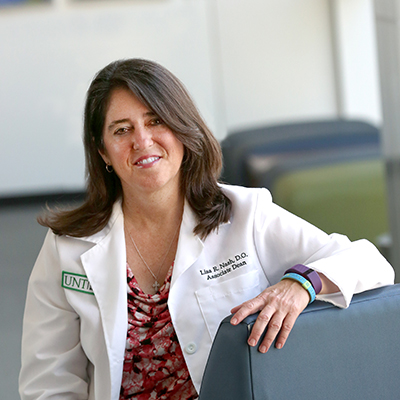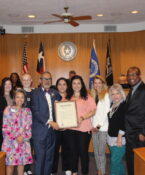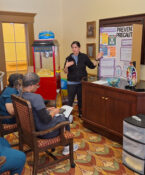Training doctors for small-town Texas
By Jan Jarvis

Having grown up in Brock, Texas, population 80, Dr. Lisa Nash knows how tough the path is to becoming a physician – especially for students from rural communities.
“I grew up on a farm and nobody in my community had gone to medical school ever. Actually, most never went to college,” said Nash, Associate Dean for Educational Programs in the Texas College of Osteopathic Medicine. “I had to get scholarships and work through college, doing everything from cleaning houses to building log cabins.”
Stories like hers are what inspired the Primary Care Pathway Program, an innovative new partnership among UNT Health Science Center, University of North Texas, and Midland College.
The program accelerates a student’s medical education and relieves some of the stress that comes with applying to medical school. Including undergraduate years, participants can earn a Doctor of Osteopathic Medicine degree in seven years, rather than the traditional eight. It also streamlines admission into TCOM and allows students to skip the Medical College Admission Test or MCAT.
For qualified students attending Midland College, it’s a rare opportunity to fast-track their education and get lots of support along the way.
“This program is for students who have a lot of desire to become a physician, but for various reasons the opportunities are lacking for them,” said Ann Smith, Academic Program Coordinator at the Health Science Center. “We can give them a pathway to medical school and help those who otherwise might never get that chance.”
Patients in West Texas, where there’s a critical shortage of physicians, stand to benefit as well.
“In some parts of West Texas there may be only one physician and he’s 80 miles away,” Smith said. “This program is a way to address the physician shortage by training doctors who will return to West Texas to practice medicine.”
According to the American Medical Association, the nation will likely see a shortage of 125,000 to 160,000 physicians by 2025, most in the primary care field. Studies show that students from rural areas are more likely to return there to practice medicine. Dr. Nash, for example, practiced in the tiny town of Littlefield before moving to Galveston and then back to Fort Worth.
The Pathway Program began last year with $350,000 from the Texas Legislature. This fall, Midland College will enroll students in the first leg of their journey to becoming a physician.
Students are required to attend Midland College for two years, followed by a year at the University of North Texas. During that time students must maintain a minimum 3.5 grade point average. Those who successfully complete 90 credit hours and other prescribed requirements, including two summer internships, are granted early admission to TCOM.
“The program is rigorous, but it opens doors to students that are at a tremendous disadvantage compared to the typical of medical school applicant,” Dr. Nash said. “Instead of a 4.0 they might have a 3.8 because they worked fulltime. But I’m willing to bet they have what it takes to get through residency.”
The program also promises to benefit patients throughout the state.
“If we can get this model right, we could do this in 50 communities across Texas,” Dr. Nash said. “That will go a long way toward addressing the severe shortage of physicians outside urban areas.”





Social media